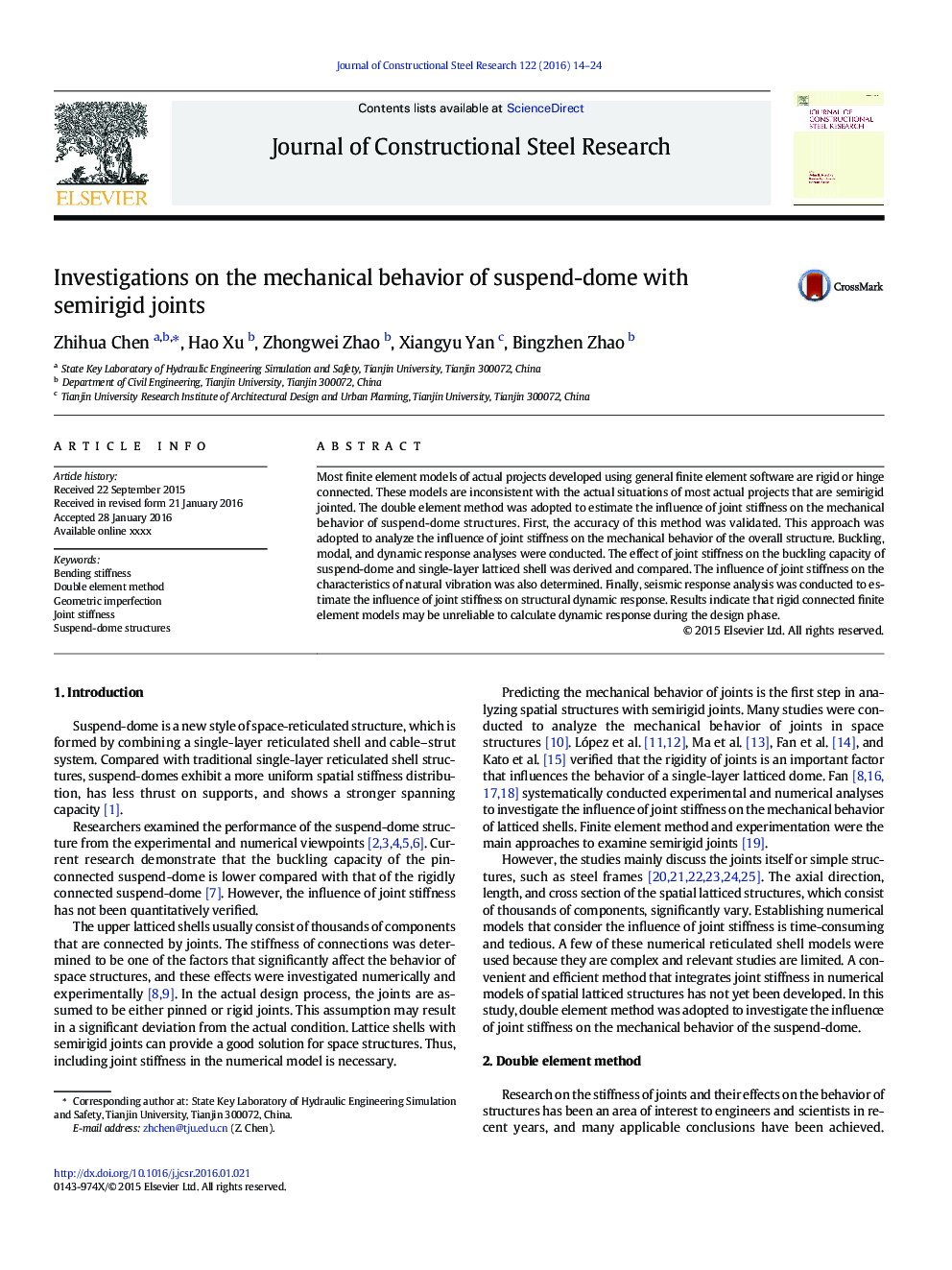| Article ID | Journal | Published Year | Pages | File Type |
|---|---|---|---|---|
| 6751311 | Journal of Constructional Steel Research | 2016 | 11 Pages |
Abstract
Most finite element models of actual projects developed using general finite element software are rigid or hinge connected. These models are inconsistent with the actual situations of most actual projects that are semirigid jointed. The double element method was adopted to estimate the influence of joint stiffness on the mechanical behavior of suspend-dome structures. First, the accuracy of this method was validated. This approach was adopted to analyze the influence of joint stiffness on the mechanical behavior of the overall structure. Buckling, modal, and dynamic response analyses were conducted. The effect of joint stiffness on the buckling capacity of suspend-dome and single-layer latticed shell was derived and compared. The influence of joint stiffness on the characteristics of natural vibration was also determined. Finally, seismic response analysis was conducted to estimate the influence of joint stiffness on structural dynamic response. Results indicate that rigid connected finite element models may be unreliable to calculate dynamic response during the design phase.
Related Topics
Physical Sciences and Engineering
Engineering
Civil and Structural Engineering
Authors
Zhihua Chen, Hao Xu, Zhongwei Zhao, Xiangyu Yan, Bingzhen Zhao,
